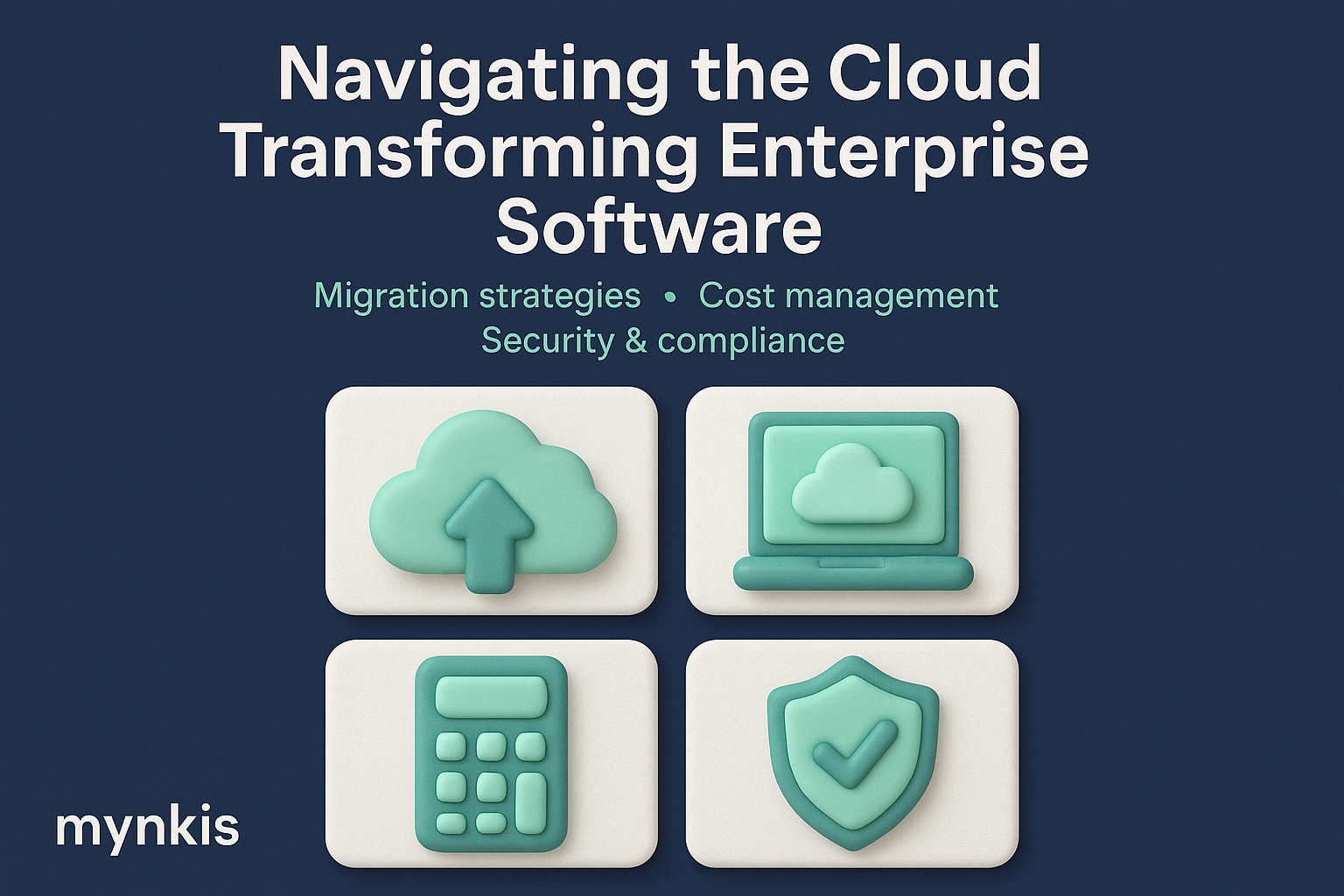Schedule a Demo
The landscape of software development has been radically transformed by cloud computing. What was once a realm of bulky on-premises servers and rigid scalability is now a dynamic, flexible, and infinitely scalable environment. For large organizations seeking custom enterprise software solutions and high-performance websites, understanding the nuances of cloud computing can unlock a world of possibilities, from streamlining internal tools to revolutionizing customer portals.
In my work with operations managers and executives, I've seen firsthand how cloud computing shifts the focus from managing hardware to leveraging software capabilities. Gone are the days of worrying about server failures and hardware maintenance. Instead, businesses can now focus on what truly matters: delivering innovative solutions and superior user experiences.
At its core, IaaS provides businesses with the building blocks to construct their own computing environments. This service, which giants like AWS and Azure offer, allows organizations to deploy virtual servers, storage, and networking components over the internet. IaaS empowers large organizations to build scalable and flexible custom software development solutions without the need for upfront capital expenditure on hardware.
Moving up the cloud stack, PaaS offers a platform allowing developers to design, develop, and manage applications without the complexity of building and maintaining the infrastructure typically associated with developing and launching an app. From my conversations with CTOs and project leads, PaaS is increasingly appreciated for accelerating development timelines and enabling rapid iteration cycles in software projects.
SaaS stands out as a game-changer in how enterprise-level applications are delivered and consumed. This model delivers software over the internet on a subscription basis, eliminating the need for organizations to manage the underlying infrastructure and software maintenance. SaaS applications are ideal for internal tools that demand quick deployment and continual updates, providing large organizations with streamlined operations and improved user experiences.
One of the standout features of cloud computing is its scalability. In enterprise software solutions, this translates to the ability to ramp up resources during peak times or scale down when demand diminishes. I've witnessed businesses utilizing this flexibility to optimize costs and performance, seamlessly aligning their IT expenditure with actual usage and business demands.
Security is paramount for any enterprise software project, and the cloud can offer robust solutions here as well. According to IBM's Security Intelligence, 70% of organizations plan to adopt a cloud-based security solution. Cloud providers often exceed the security capabilities that most organizations could achieve internally, offering sophisticated measures like encryption and advanced firewalls while ensuring compliance with industry regulations.
In my consultations with crisis management teams, I've learned that cloud-based disaster recovery solutions have become essential for large organizations. The cloud provides an efficient and cost-effective way to replicate data and critical applications across multiple geographic locations, ensuring business continuity in the event of unforeseen disruptions.
Cloud-native development represents a paradigm shift in how applications are built, optimized specifically for cloud environments. This approach involves utilizing microservices architecture, containers, and continuous integration/continuous deployment (CI/CD) practices. By moving to cloud-native development, organizations can develop applications that are more resilient, scalable, and easier to update.
The cloud has turned the traditional cost model of software development on its head. Rather than large capital expenditures and the associated risks, cloud computing allows for a pay-as-you-go model. This approach helps large organizations optimize IT budgets, ensuring that funds are directed where they can generate the most value rather than being tied up in infrastructure.
For enterprises competing in fast-paced markets, the cloud is a potent tool for accelerating innovation. I've seen teams leverage cloud resources to rapidly prototype, test, and deploy new features and applications. The agility that cloud computing provides can be the deciding factor in getting a product to market faster than competitors.
Not all organizations have a one-size-fits-all approach to the cloud. Hybrid and multi-cloud strategies allow businesses to blend cloud services with on-premises infrastructure, selecting the best solutions for specific needs. From discussions with IT leaders, it's clear that such strategies help mitigate vendor lock-in and provide a more flexible technological ecosystem.
As enterprises delve into cloud computing, it's crucial to consider the ethical and sustainability implications. According to a report by Nature Climate Change, the energy efficiency of cloud data centers plays a significant role in reducing the carbon footprint of IT operations. With technology leaders like Google and Microsoft setting ambitious sustainability goals, companies using cloud services are also indirectly participating in global efforts to combat climate change.
While cloud computing offers numerous benefits, it's not without its challenges. Data sovereignty, for instance, can complicate international operations due to varying regulations. I've advised clients to carefully evaluate cloud providers based on their compliance with local and international laws, while also considering potential latency issues which can affect the performance of applications depending on the geographic distribution of users.
The future of cloud computing in custom software development looks promising, with emerging technologies like serverless computing and edge computing gaining traction. These trends point towards even more efficient and cost-effective solutions for developing and deploying enterprise-level software. Keeping an eye on these developments can position large organizations at the forefront of technological advancement.
In leveraging cloud computing for your organization’s custom enterprise software solutions and high-performance websites, it's evident that the benefits are manifold. Whether it's the agility to pivot quickly, the cost savings from scalable resources, or the global redundancy that ensures business continuity, the cloud offers a toolkit for transforming your business operations. By adopting a balanced view of its potential and challenges, supported by rigorous research and strategic planning, you can harness the power of the cloud to drive innovation and growth.
